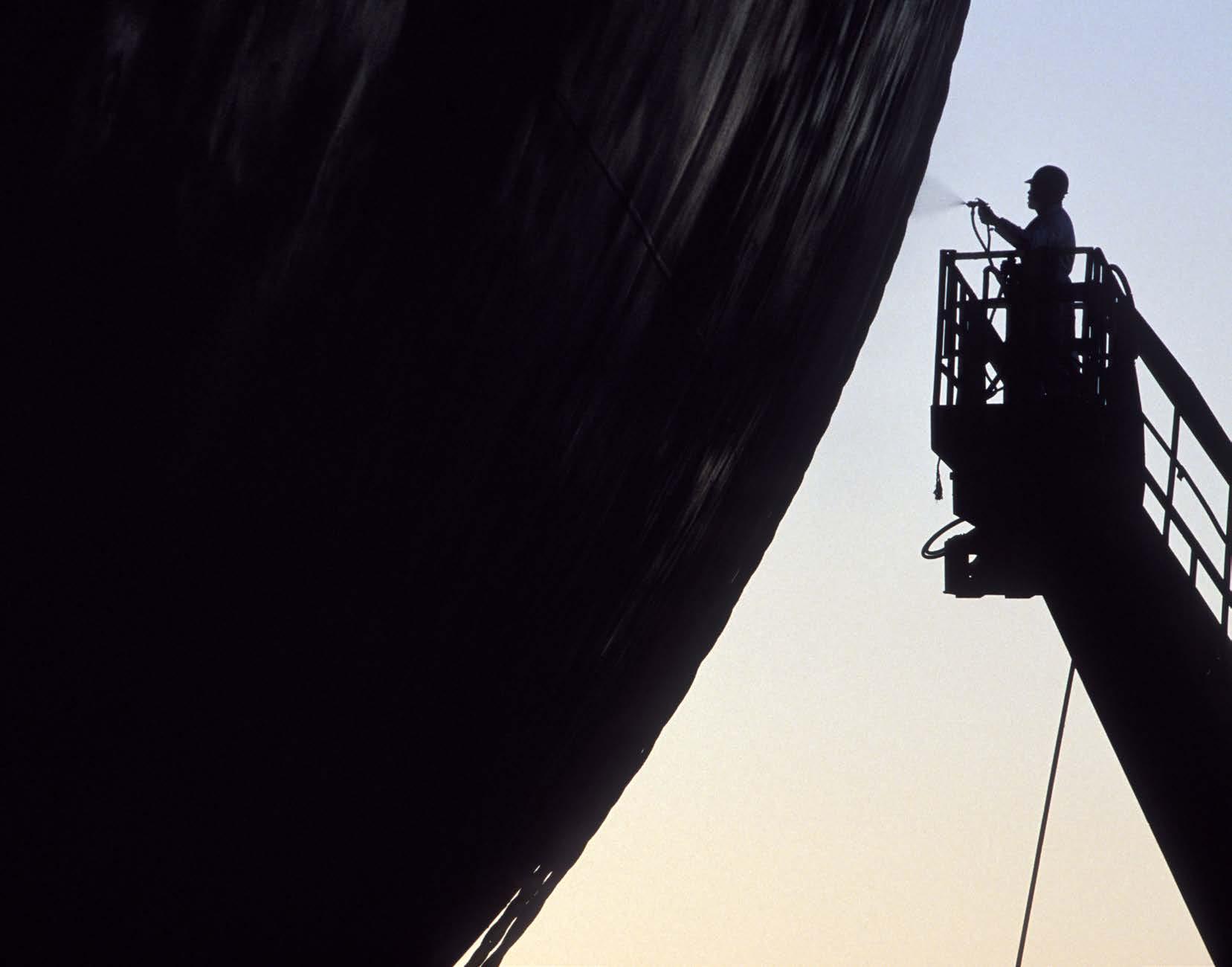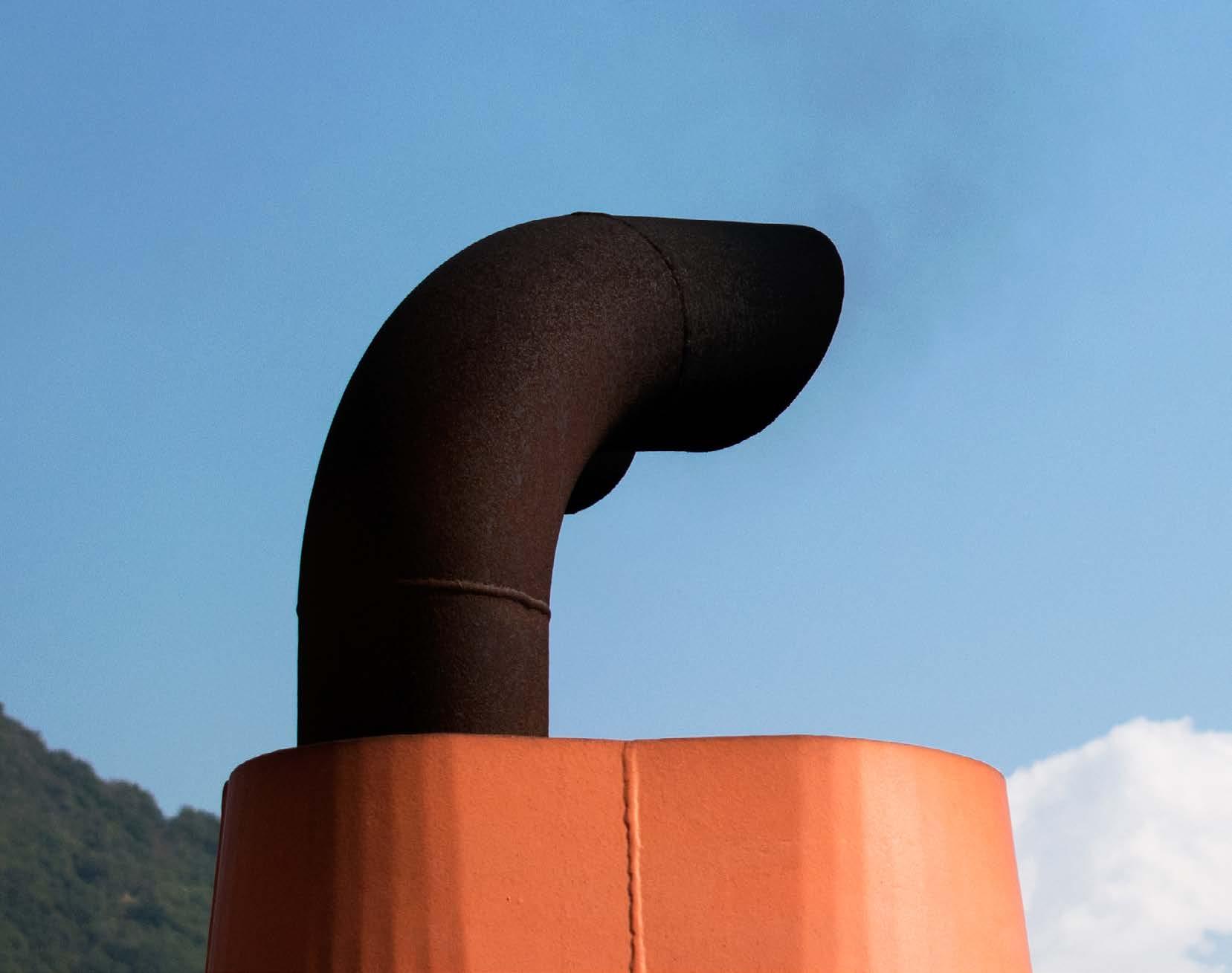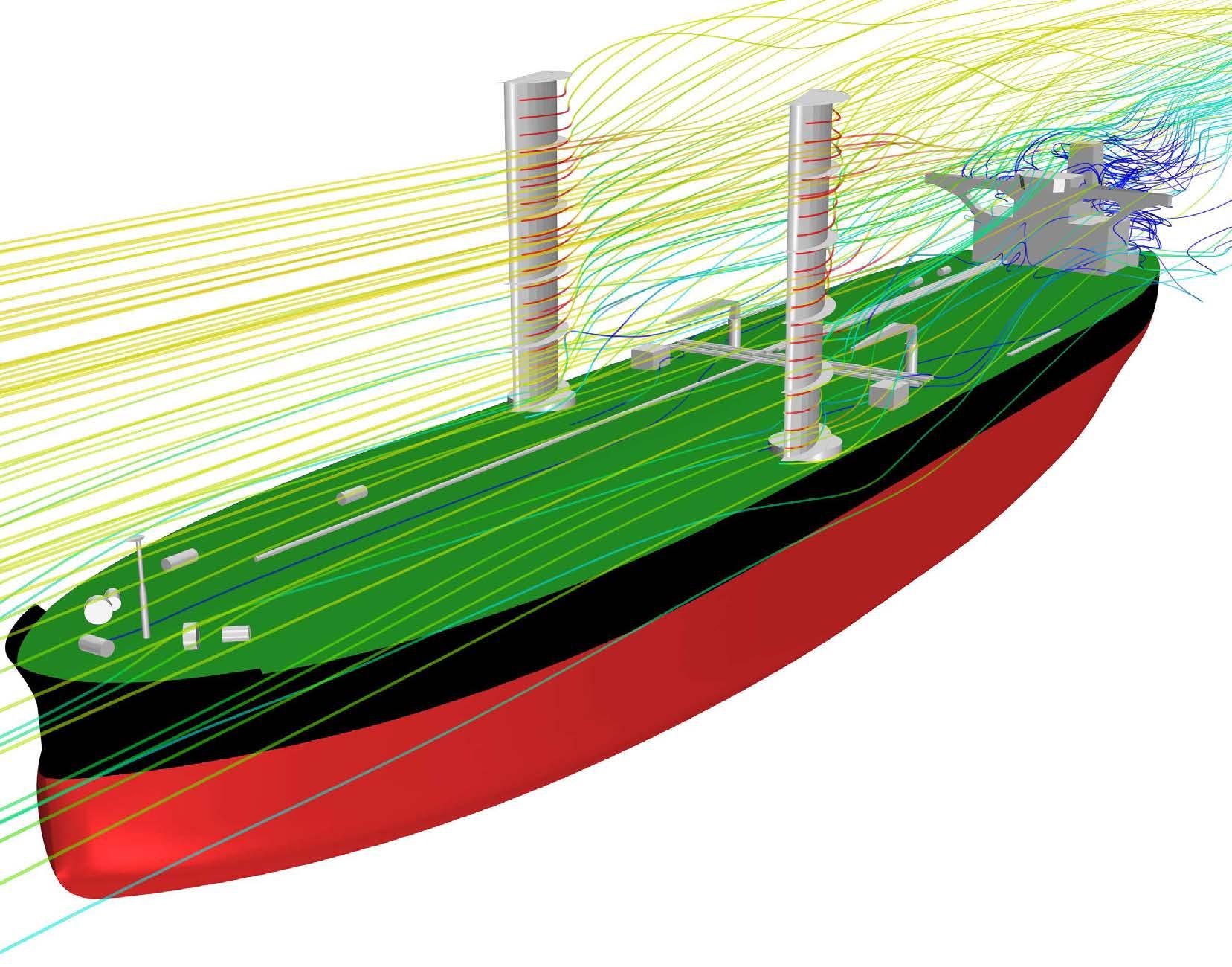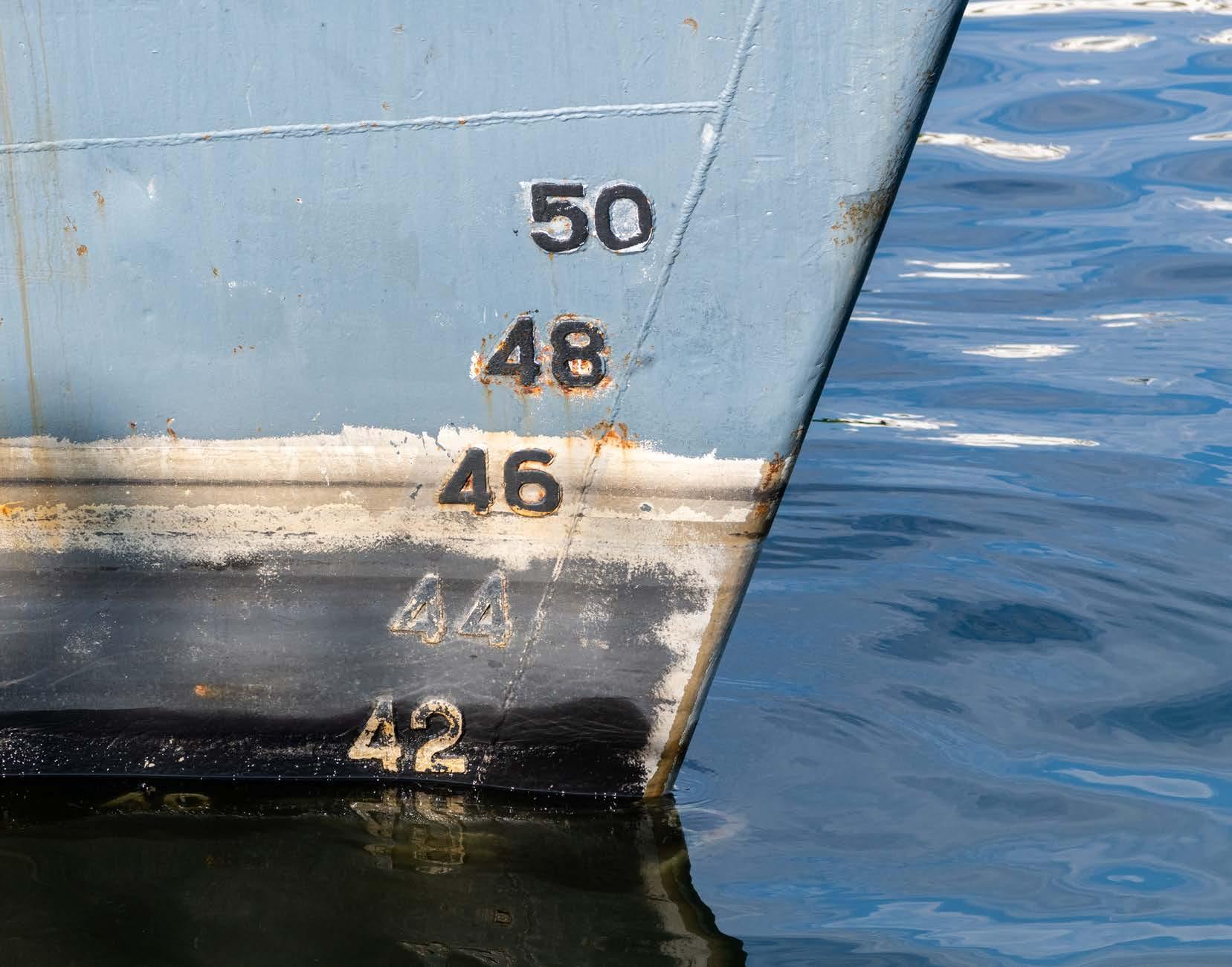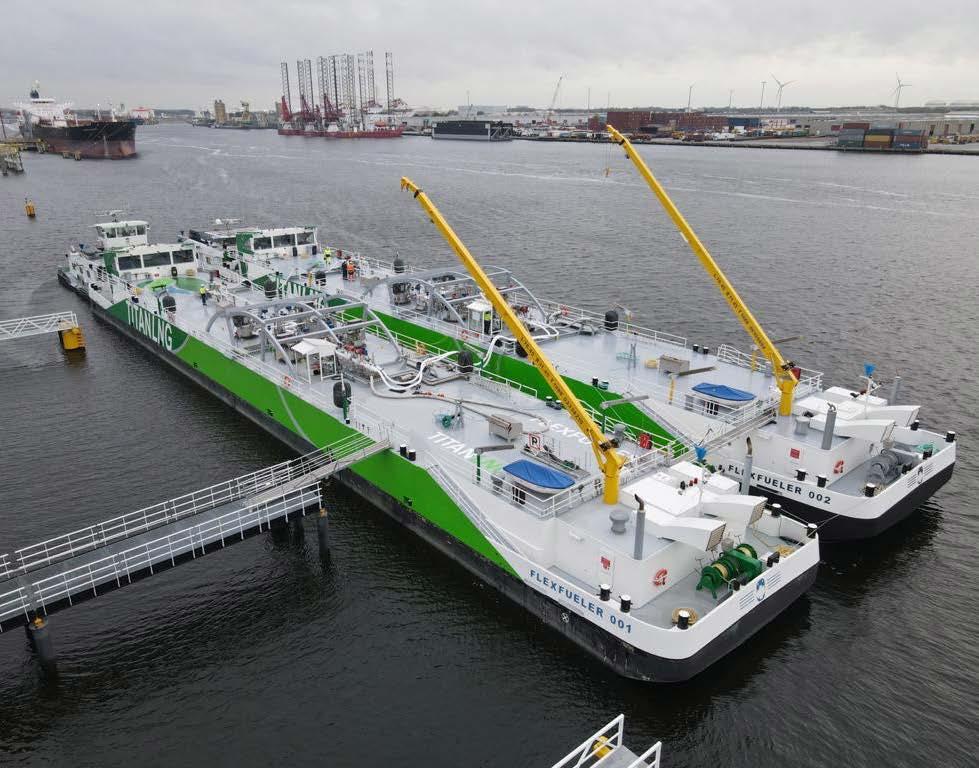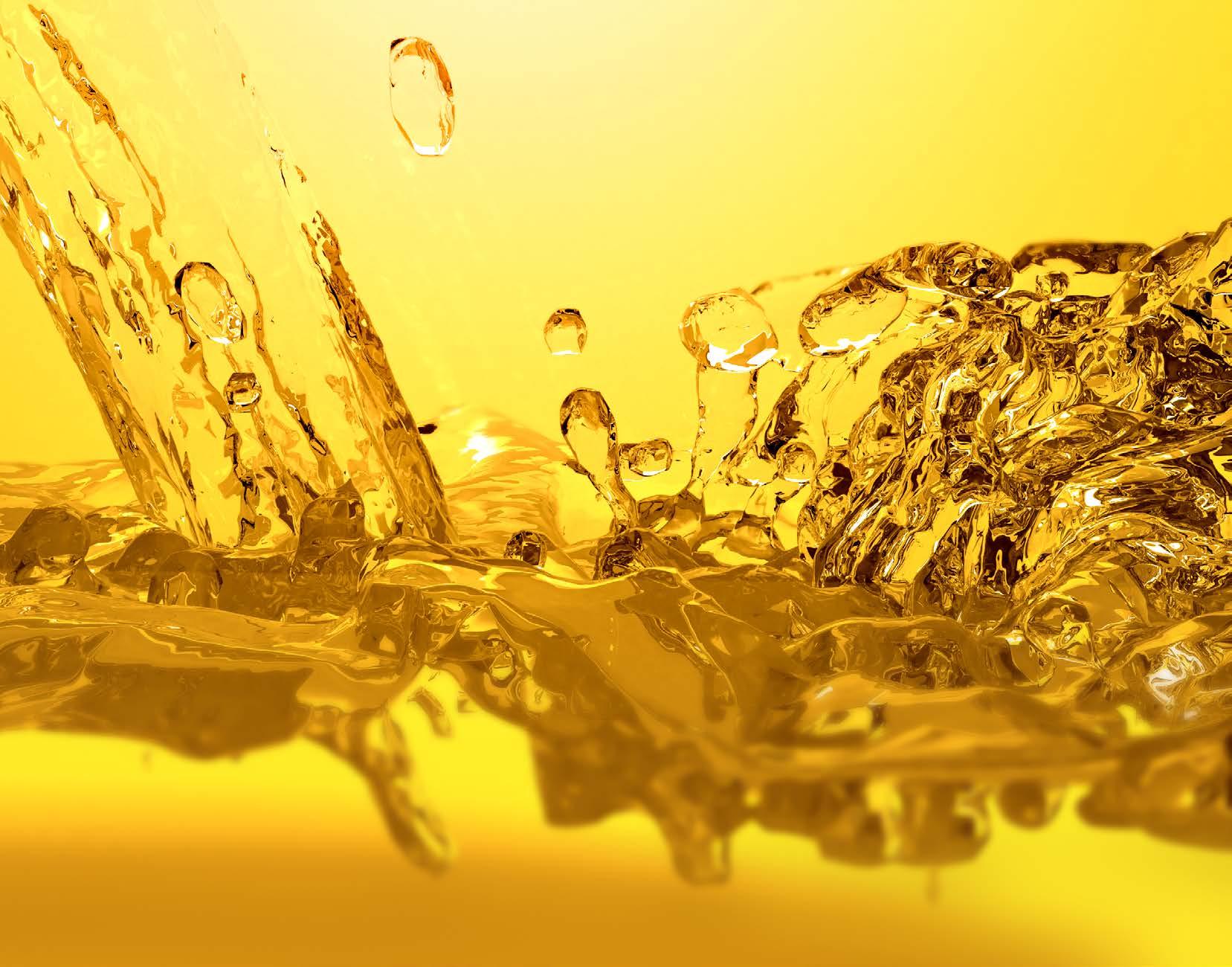
10 minute read
High-level studies examine the safe use of ammonia as a fuel of the future
from CSI Spring 2021
by Maritime-AMC
Several highlevel studies are examining the safe use of ammonia for marine propulsion, while several industry consortia are gearing up to embrace its use
Schematic of the fuel cells fitted on Viking Energy
AMMONIA: THE
FUTURE OF FUEL?
The use of ammonia as a future fuel is currently gaining traction with several high level studies ongoing aimed at testing various solutions. In addition, there are a growing number of Approval in Principals (AiPs) being awarded to ammoniapowered vessel designs by the major classification societies.
Of course, the use of ammonia is not without its challenges, as highlighted by a recent study published by classification society American Bureau of Shipping (ABS).
Ammonia is in the early stages of development for marine propulsion. For example, ammonia-fuelled engines are under development and the use of ammonia in fuel cells is also being explored.
Two major barriers exist — the cost of producing ammonia-based fuels and the need to ensure that they are safe to use on ships. Apart from the cost of adapting the infrastructure, ammonia is toxic to humans and aquatic life. Therefore, considerable safety measures must be taken, ABS warned.
When used as an IC-engine fuel, ammonia combustion predominantly produces water and nitrogen. Unburned ammonia must be closely controlled and guidance on acceptable limits to avoid plume formation or human health hazards can be drawn from other regulatory requirements, where limits of 2-10 parts per million (ppm) may be applied. IMO NOx limits would also be applicable upon its combustion.
Fuel containment, distribution and supply systems can be based on existing technologies and prescriptive requirements. In a liquid state, ammonia is not flammable and cannot ignite. However, it vaporises rapidly and this vapour has a narrow flammable range.
The main concern is toxicity and additional measures are needed to control normal and abnormal discharges.
Understanding the requirements of ammonia gas, including low-temperature service, pressurised storage tanks, flammable gases and working with corrosive and toxic materials, is key to addressing the safety hazards involved.
Ammonia tanks need to be designed for temperature and/or pressure control if it is stored in a refrigerated condition, as it continuously evaporates and generates boil-off gas (BOG), due to heat gain, which increases the pressure in tanks if not managed. Alternatively, ammonia can be stored in Type C tanks.
New challenges apply to ammonia. These will typically include crew training, bunkering availability, port discharge limit compliance, tank venting and planning for human exposure beyond permissible limits. These challenges need to be addressed during the Hazard Identification (HAZID) study when designing the vessel.
ABS outlined the advantages and challenges to using ammonia as a marine fuel:
Advantages
» Carbon free — no CO2 or soot. » Low flammability risk — 15.15% to 27.35% in air » Can be produced from electrical energy — renewable » Easily reformed to hydrogen and nitrogen » Can be stored and transported as a liquid at a practical pressure and temperature » Established commercial product.
Challenges
» Toxicity » Fuel infrastructure » Lack of regulations » Engine development at design stage » Cost » Corrosiveness to certain materials » Poor combustion characteristics for
IC-engine application » Possible need for high percentage of pilot fuel » Possible increased NOx emission » Possible ammonia slip. Marine engines are currently being developed by applying existing dual fuel (DF) engine technologies to ammonia.
Designs for ammonia-fuelled feeder ships have also been unveiled by consortia involving designers, classification societies and shipyards.
Ammonia has greater prescriptive requirements for containment and equipment than most of the other alternative fuels currently under consideration. It is a globally traded commodity and there are many smaller gas carriers that may be suitable to be used bunkering vessels.
However, for ammonia to become a commercially-viable long-term fuel option, comprehensive supply-side infrastructure would need to be built and stringent new safety regulations developed and implemented. This also applies to all alternative fuels under consideration, ABS stressed.
When measuring the net carbon impact, “tank-to-wake” only considers the emissions from burning or using an energy source, not the process of sourcing the fuel or getting it to the ship. As a result, “well-to-wake” emissions should be considered for alternative fuels because this encompasses the lifecycle of a fuel, including production, transportation and use.
Interest is growing in the use of ammonia as a feeder to hydrogen-fed fuel cells by owners operating liquefied petroleum gas (LPG) carriers carrying ammonia as cargo.
When used as a fuel, hydrogen is zero carbon at point of use (tank-towake). However, if it is produced from non-renewable feedstock, such as non-renewable natural gas through a process using energy not from renewable source, the process (wellto-tank) could produce significant emissions. Alternatively, it can be produced by water electrolysis with renewable energy to eliminate the emissions from feedstock and the production process.
Once cracked, the hydrogen from ammonia can be an abundant resource for fuel cells to generate electric power. However, ammonia’s advantages should be weighed against the energy losses and additional equipment required for conversion to hydrogen before it is used in fuel cells.
ABS warned that an issue with using ammonia as a fuel is its concentration in the product gas. Although the concentration may be less than 50ppm, this is still enough to damage fuel cells with acid electrolytes, so an acid scrubber is needed to remove the final traces of gas from the cracker.
Storage of liquid hydrogen requires at least five times more volume compared to petroleum-based fuels, while ammonia requires about 2.4 times more volume. Therefore, as a long-term solution, zero carbon fuels would require new vessel designs and optimisation of operational factors to avoid compromising sailing distance, refuelling needs, or cargo volume.
Ammonia has a higher volumetric energy density than liquefied hydrogen, closer to that of methanol, which reduces the need for larger tanks. The volume of NH3 storage tanks will be significantly less than of those for liquid hydrogen for the same energy requirement — even more so considering the volume of insulation required.
Its fuel characteristics enable the use of Type C or prismatic tanks and require significantly lower re-liquefaction energy compared to hydrogen or LNG. Ammonia can be stored in liquid form at 8.6 bar and at ambient temperature (20° C) on board a vessel.
In its 2020 Energy Prediction report, the International Energy Agency (IEA) forecast that the use of ammonia and hydrogen as vessel fuels will expand and will account for 60% of marine fuels by 2060.
Similarly, BP announced in its 2020 energy forecast that the percentage of non-hydrocarbon fuels, such as ammonia, hydrogen, biofuel and others, will increase to 85% of 2018 total energy amount by 2050.
AMMONIA-READY VESSEL
ABS also recently classed the world’s first ammonia-ready vessel. This was a Suezmax ordered by Avin International, the lead vessel of a potential three ship order. The 274m long tanker (Hull number 0315852), is under construction at New Times Shipbuilding. Options exist for another two vessels.
To be conventionally fuelled, the vessel will comply with the ABS Ammonia Ready Level 1 requirements, indicating it is designed to be converted to run on ammonia in the future. All of the ships in this project will also meet these requirements.
This indicates that the vessel conforms to the requirements outlined in the ABS Guide for Gas and Other Low-Flashpoint Fuel Ready Vessels.
Another classification society has recently awarded two AiPs for
ammonia fuelled ship designs — an ultra large containership and a tanker.
For the containership, Lloyd’s Register (LR) has granted an AiP to Daewoo Shipbuilding & Marine Engineering (DSME) and MAN Energy Solutions (MES) for an ammonia fuelled 23,000teu ultra-large container ship design. This was a joint development project (JDP) launched earlier focusing on developing ammonia propelled ships.
As part of the JDP, DSME generated the basic design of the ammonia propulsion system and MES was responsible for the development and specifications of the ammonia dual-fuel propulsion engine.
LR said that its role was to review the suitability and risks of the design, which involved a HAZID workshop, a hazard and operability analysis (HAZOP) workshop and a design review in accordance with the Approval of Risk-Based Design (ARBD) process, which led to the AiP.
The certification constitutes the first phase of the JDP. The second phase will involve further design development for meeting market demand in terms of commercial viability, as well as technical and safety maturity. The design is expected to be commercialised by 2025.
LR has also granted an Approval in Principle (AiP) to Samsung Heavy Industries (SHI) for its ammonia-fuelled tanker design.
This was described as a key progress milestone in the JDP involving LR and SHI with industry partners MISC Berhad and MES, formed in January 2020. The JDP is aimed at commercialising the design by 2024.
Elsewhere, classification society RINA and the Shanghai Merchant Ship Design & Research Institute (SDARI) have signed a JDP agreement to develop a ship design capable of being fuelled by either ammonia or methanol.
SDARI is to focus on the ship concept development and design, while RINA will verify the compliance with the applicable rules, including those for the use of alternative fuels.
The selected ship type is a tanker but the project, which is claimed to be the first to investigate using both methanol and ammonia in this type of vessel, will increase understanding of the application of both fuels within the shipping industry with opportunities to apply designs to different types of ships, RINA claimed.
External support to the project will be provided by MES.
DANISH INITIATIVE
MES is also leading a Danish consortium on the development of ammonia as a marine fuel.
This consortium is backed by Danish investment entity Innovation Fund Denmark and is aimed at developing a two-stroke, ammonia-fuelled engine (AEngine). It aims to specify and demonstrate an entire, marinepropulsion system that will pave the way for the first commercial order for an ammonia-fuelled vessel.
As well as MES, the consortium also includes Danish fuel-system supplier Eltronic FuelTech, the Technical University of Denmark (DTU) and classification society DNV GL. The development is scheduled for 2024.
Another initiative, the ShipFC project, was granted funding last year from the EU’s Research and Innovation programme Horizon 2020 under its Fuel Cells and Hydrogen Joint Undertaking (FCH JU).
The offshore supply vessel Viking Energy, owned and operated by Eidesvik and on charter to Norwegian energy major Equinor, will be fitted with a 2MW ammonia fuel cell, allowing it to operate for at least 3,000 hours annually on clean fuel.
Following the completion of this phase, the project will ramp up to delivering 20MW fuel cell solutions for oceangoing vessels.
“The ultimate goal of the project is to demonstrate the feasibility of ammonia fuel cells for ocean going vessels and long sea voyages,” explains Dr Michail Cheliotis, research associate at the University of Strathclyde, lead partner in the project. “The huge difference in scope makes ShipFC much more interesting than just a replication of Viking Energy. The similarities basically end with ammonia, because a 20MW power plant requires significantly different treatment.”
The project will involve three vessel types: a bulk carrier, an offshore construction vessel and a containership.
The technical and economic experience gained from the Viking Energy pilot project will be incorporated in a broader analysis of ammonia in the maritime sector and comparison with other alternative fuels.
“Ammonia presents certain technical challenges, but even though it is corrosive, the safety trade-off between ammonia and hydrogen favours ammonia,” Dr Cheliotis says. “It is less explosive, requires less complex storage and transport solutions, and it is a well-known commodity from industry. Based on this experience, the necessary safeguards can be built in.”
Experience with gas fuels will be a significant building block, he says. “We have seen that liquid ammonia is similar to liquefied gas in the handling process. Industry has a high level of maturity and an excellent track record in handling LNG and LPG, and this experience is proof that it can be done safely.
“We will be looking at the entire life cycle of ammonia, from production to transport and bunkering. One of the ShipFC partners is a major supplier of ammonia, and we will be working together with them to address these issues,” he explains.
ShipFC’s project partners are: » The University of Strathclyde (UK) and National Centre for Scientific
Research Demokritis (GR) will assess safety criteria. » Norwegian members of the
European consortium include
NCE Maritime Cleantech, Eidesvik
Shipping, Equinor, Prototech,
Yara, and Wärtsilä Norway, responsible for fuel systems, ship’s design and stability, and vessel energy management. » Fraunhofer IMM will assist Prototech in the development and construction of the ammonia fuel cell system, while Persee will provide expertise on energy management controls and data. » Vessel owners are StarBulk
Management (bulk carrier), North
Sea Shipping (offshore construction vessel) and Capital Ship
Management (container vessel).

